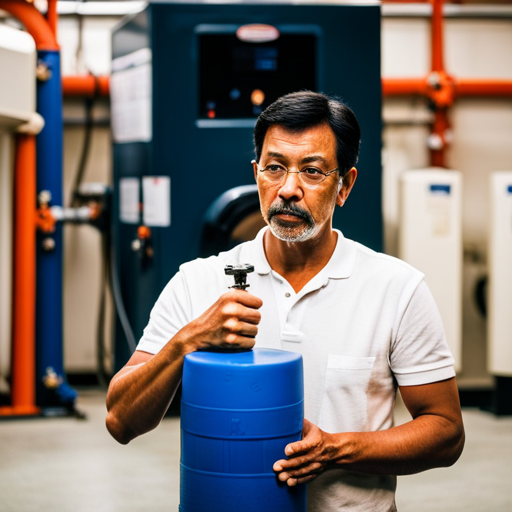Are you tired of the incessant beeping coming from your Culligan water softener? You’re not alone. The beeping can be caused by a variety of issues, ranging from low salt levels to clogged injectors, salt bridges, low water pressure, and routine maintenance.
Fortunately, with a little bit of troubleshooting, you can stop the beep and get your water softener back to working properly.
In this article, we will explore the causes of beeping in Culligan water softeners and provide you with troubleshooting tips to help you stop the beep. We’ll cover everything from regular cleaning and maintenance to resetting and regenerating your water softener.
By the end of this article, you’ll have the knowledge you need to get your Culligan water softener back to its beeping-free state and enjoy the benefits of soft, clean water once again.
So let’s get started!
Key Takeaways
– Regular maintenance and cleaning can prevent beeping issues in Culligan water softeners.
– Cleaning the brine tank and electrodes is important to prevent buildup and ensure accurate readings.
– Checking the brine float assembly periodically is necessary to ensure proper functioning.
– Troubleshooting tips can help stop the beep and get the water softener back to working properly.
Causes of Beeping
If your Culligan water softener is beeping, it could be due to a variety of reasons. One common cause is low salt levels, which can affect the electrical conductivity of the brine solution and trigger the alarm system.
Another potential issue is a clogged injector, which can occur due to iron buildup in the system. This can also impact the accuracy of the brine solution readings.
To address these issues, it’s important to perform regular maintenance on your water softener. This includes cleaning the electrodes and brine tank to ensure accurate readings and prevent clogs.
Additionally, if you suspect a salt bridge is the cause of the beeping, you can try breaking it by tapping the tank or covering the salt with hot water to dissolve the bridge.
By addressing these common causes of beeping, you can prevent future issues and keep your Culligan water softener functioning properly.
Maintenance and Cleaning
To ensure proper function of your Culligan water softener, regularly clean the brine tank and electrodes to prevent buildup and ensure accurate readings. Over time, the brine tank can accumulate salt residue, which can affect the conductivity readings.
To clean the tank, carefully remove the lid and use a soft brush or cloth to scrub the sides and bottom of the tank. Avoid using abrasive materials or harsh detergents that can damage the tank and electrodes. Rinse the tank thoroughly with clean water before replacing the lid.
In addition to cleaning the brine tank, there are preventative measures you can take to avoid future beeping issues. Check the brine float assembly periodically to ensure it’s properly functioning and not obstructed by salt buildup. You can also add a small amount of resin cleaner to the brine tank during each regeneration cycle to prevent buildup and extend the life of your water softener.
By regularly maintaining and cleaning your Culligan water softener, you can prevent future beeping and ensure your system is working efficiently.
Resetting and Regenerating
When resetting and regenerating your Culligan water softener, hold down the REGEN button and adjust the settings according to your needs. This is an important step in maintaining the proper functioning of your water softener.
If you have hard water problems, it’s essential to ensure that your water softener is working effectively. Regenerating your water softener helps to remove the minerals that have built up over time and restore the efficiency of the system.
Adjusting settings is also necessary when resetting your Culligan water softener. You can change the time of day for regeneration and the hardness level to suit your needs. By doing this, you can ensure that your water softener is working effectively and efficiently.
Regular maintenance, cleaning, and resetting of your Culligan water softener can help prevent beeping and ensure that you have soft water all the time.
Conclusion
Now that you’ve learned about the various causes of beeping in your Culligan water softener, it’s time to take action.
Regular maintenance and cleaning can prevent future beepings and ensure that your water softener is functioning properly.
Remember to check your salt levels, clean your injector, and clear any salt bridges to prevent clogs and low water pressure.
And if your water softener is still beeping, don’t worry – resetting and regenerating your system can be done with just a few simple steps.
By taking these troubleshooting tips into consideration, you can finally say goodbye to the constant beeping and enjoy the benefits of clean, soft water.
So, don’t let the beeps drive you crazy any longer – take control of your water softener and stop the beep today!
